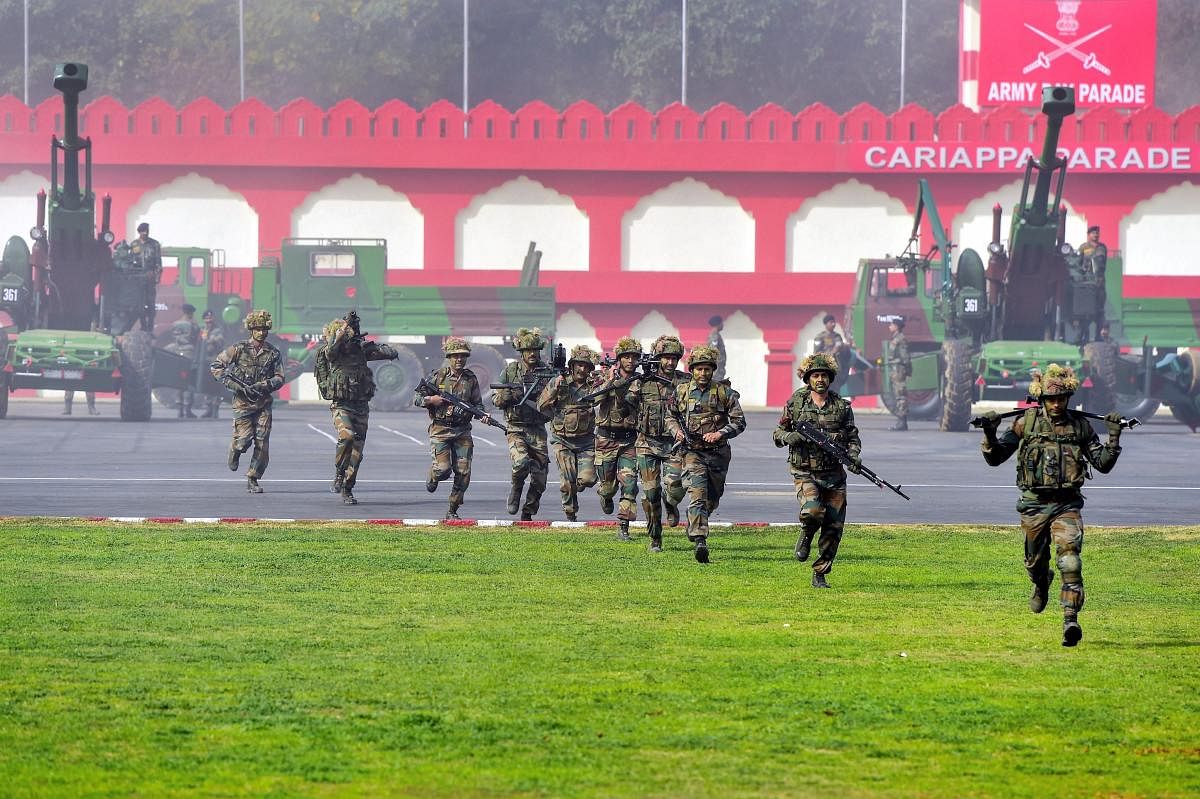The unresolved territorial and boundary disputes with both China and Pakistan and their growing nexus present the possibility of a two-front war. Though the probability of major conflict is low, the armed forces must be adequately strengthened to deter war and, if it becomes necessary, to fight and win. The non-traditional threats and challenges to national security, particularly in the information warfare, cyber and space domains, are also constantly increasing. At the same time, defence preparedness is being adversely affected by obsolescence of weapons and equipment and large shortages in their authorised scales.
At such a juncture in the nation’s history, very surprisingly, the funds earmarked by Finance Minister Piyush Goyal for defence expenditure for 2019-20 are grossly inadequate. The defence budget proposed in the budget speech on February 1, 2019, for the next financial year will neither enable the armed forces to achieve the required levels of defence preparedness nor permit them to undertake the military modernisation that is necessary to acquire the desired combat capabilities.
According to a press release issued by the Ministry of Defence (MoD), a sum of Rs 3,18,931.22 crore (excluding pensions) has been earmarked as budgetary estimates (BE) for FY2019-20. This represents an increase of 7.93% over the Budget Estimates (Rs 2,95,511.41 crore), or 6.87% over the Revised Estimates (Rs 2,98,418.72 crore) for FY 2018-19.
The increase is inadequate to allow for the prevailing rate of inflation, the proposed hike in pay and allowances and the steep fall in the value of the rupee vis-à-vis the US dollar. The exchange rate impacts the price of weapons and equipment that are imported, which comprise some 70% of total defence acquisitions.
Other budgetary parameters, too, show a downward trend. The allocation is less than 1.5% of India’s projected GDP for FY20, the lowest since the 1962 war with China. At its peak, during the 1980s, the defence budget was 3.5% of GDP; since then there has been a steady decline. China spends 2.5% of its much larger GDP on defence.
No matter which yardstick India’s defence expenditure is measured by, it is among the lowest in the world. As a ratio of the central government expenditure, it is 15.48% for FY20. Pakistan keeps it steadily between 25-30%.
The ratio of capital to revenue expenditure is also far from the ideal 50:50. (Capital outlay is money allocated for new acquisitions for modernisation, replacement of obsolete weapons and equipment and expenditure on land and buildings. The revenue outlay is for expenditure on salaries, ammunition, transportation, clothing and maintenance, et al.)
For FY20, Rs 1,08,248.80 crore — 34% of the defence budget for the year — is for capital and Rs 2,10,682.42 crore — 66% — is for revenue expenditure. Manpower costs take away a large chunk of the defence budget. As the army is manpower intensive (1.2 million personnel), its capital to revenue expenditure ratio is as low as 20:80.
The net effect of consistently low capital budgets is that obsolescent weapons and equipment in service are degrading combat efficiency and little modernisation is taking place, particularly in the army. The worst impact is the inability to acquire precision guided munitions and to modernise the command and control and intelligence, surveillance and reconnaissance systems of the armed forces, even as the three wings of the People’s Liberation Army of China are modernising at a brisk pace.
The much-trumpeted approvals of Acceptance of Necessity (AoN) accorded by the Defence Acquisition Council (DAC) under the Narendra Modi government for new projects worth Rs 150,000-200,000 crore over the last five years are meaningless without assured funding support through a non-lapsable roll-on defence modernisation fund to which the budget on the capital account is added every year.
The pension bill for the ensuing financial year (Rs 1,12,079.57 crore) is approximately Rs 4,000 crore more than that for the current year (Rs 1,08,853.30 crore). This is more than the capital expenditure planned for the year! Of the total pension bill, about 40% is accounted for by 4 lakh civilian pensioners of the MoD belonging to the ordnance factories, defence PSUs, DRDO and other similar organisations.
Lower manpower costs
Urgent steps need to be taken to reduce the costs of manpower in the armed forces, even if the number of personnel in uniform cannot be drastically reduced immediately due to manpower-intensive deployments on the LoC with Pakistan and the LAC with China as well as for counter-insurgency operations in J&K and some of the North-East states. The number of civilian personnel paid out of the defence budget must definitely be reduced by privatising the ordnance factories and other similar organisations.
Parliament’s Standing Committee on Defence has repeatedly emphasised that defence expenditure should be progressively raised to 3% of GDP. India’s quest for “defence on the cheap” can only lead to another debacle like in 1962, when the defence budget had fallen to less than 2% of GDP.
It has been empirically proven that defence expenditure up to 2.5-3% of GDP has a positive impact on the growth rate of a country’s economy, provided emphasis is laid on self-reliance through indigenous defence production. The government must gradually provide more funds for defence to enable the armed forces to acquire the combat capabilities that are necessary to fight and win tomorrow’s wars.
Simultaneously, the government must pull out all the stops to genuinely encourage indigenous manufacture of weapons and defence equipment. India’s aspirations to be counted as a regional power capable of maintaining peace and stability in the Indo-Pacific in conjunction with its strategic partners and as a nation striving for world power status cannot be realised without self-reliance in defence equipment.
(The writer is former director, Centre for Land Warfare Studies (CLAWS), New Delhi)
